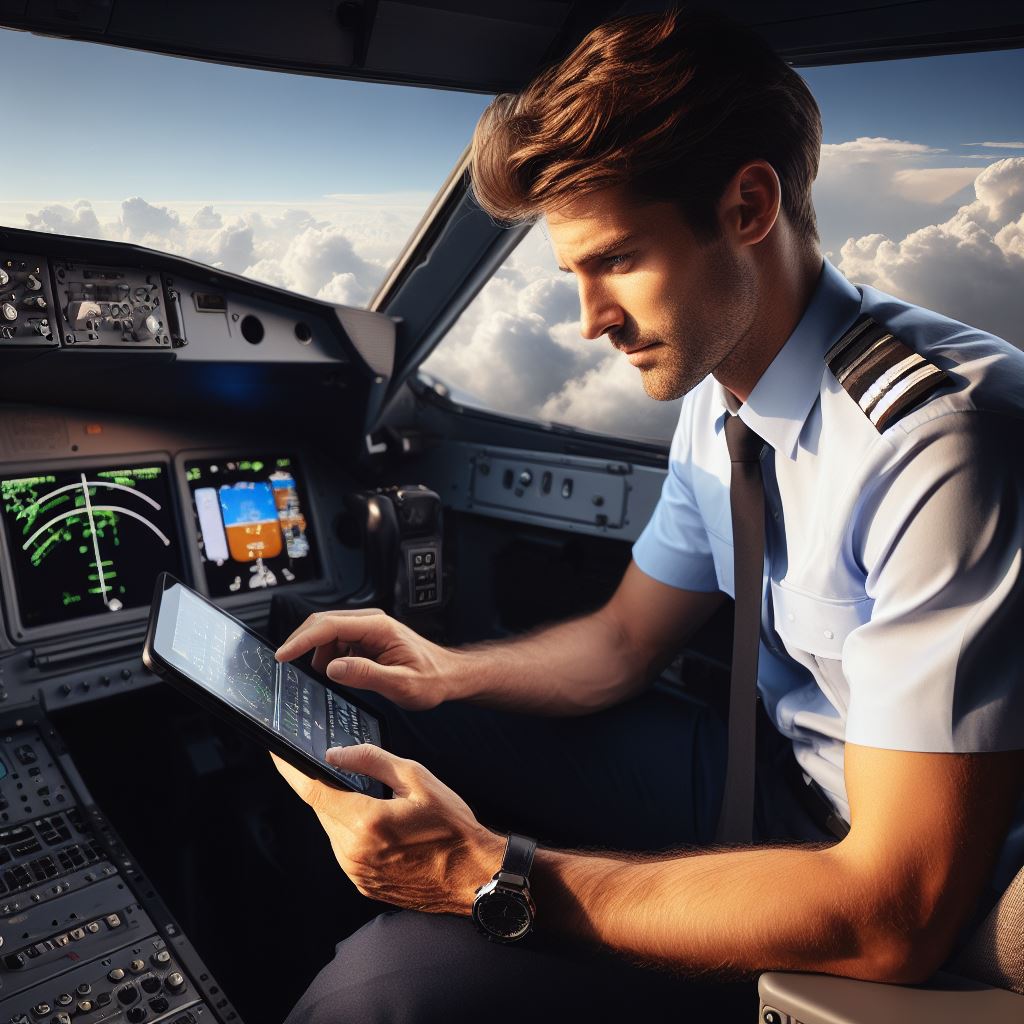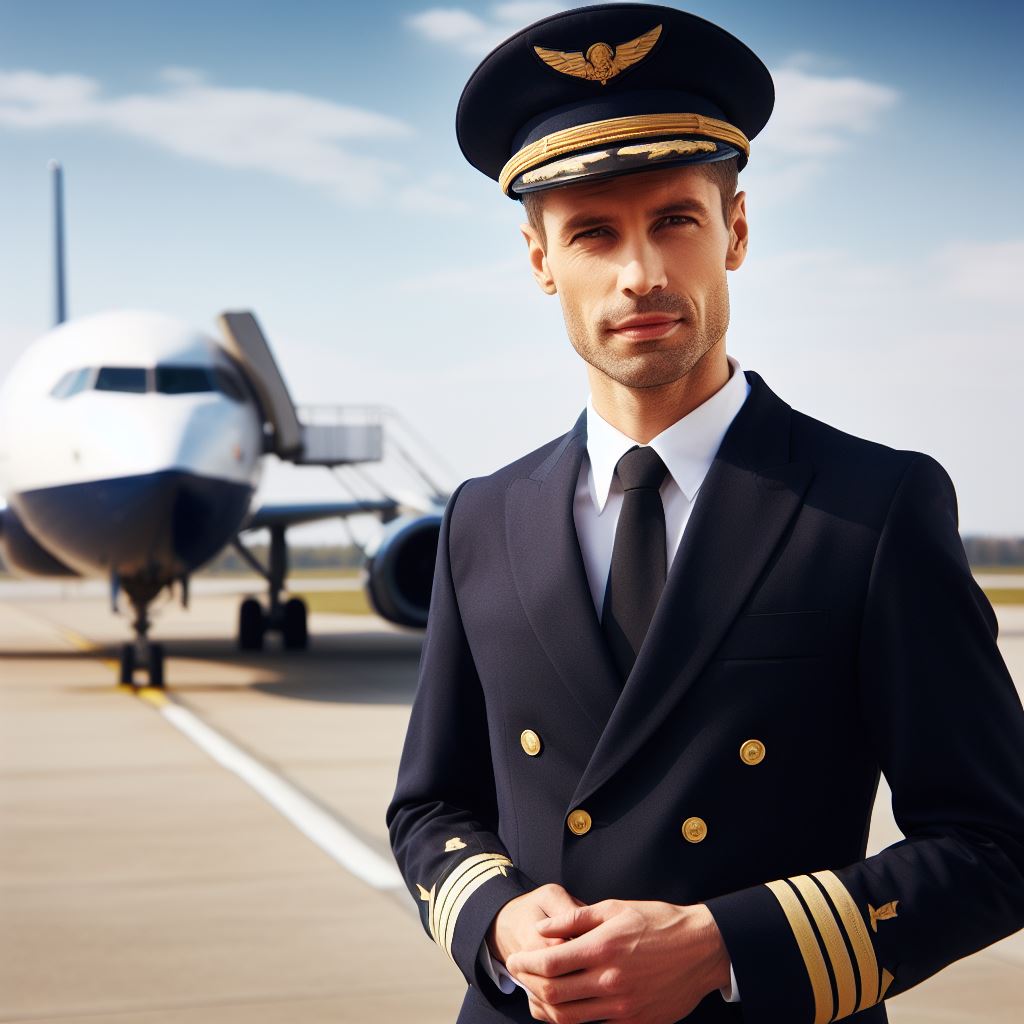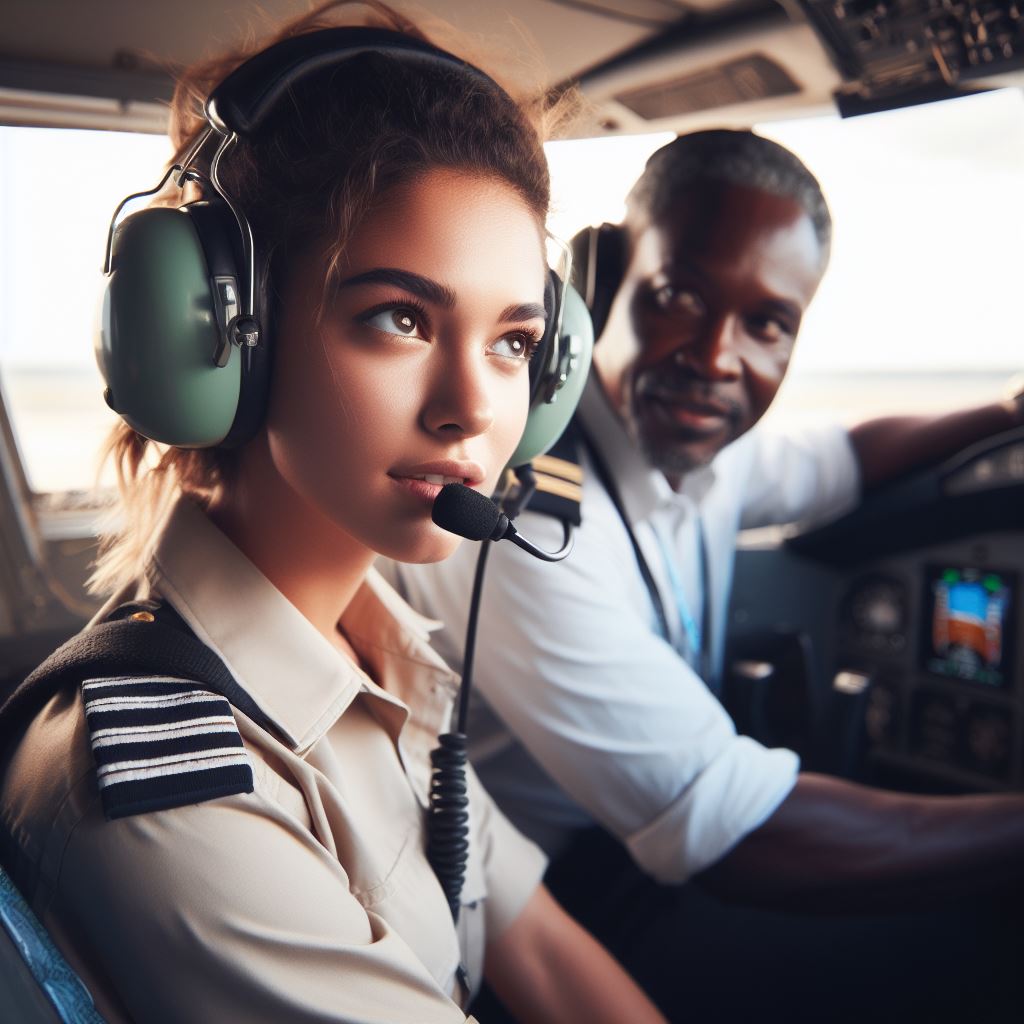Introduction
Technology plays a crucial role in the aviation industry, shaping its advancements.
It is pivotal in aviation, enhancing safety, efficiency, and connectivity.
Advanced systems streamline operations, ensuring seamless travel experiences.
Cutting-edge innovations drive progress, making air travel safer, more accessible, and environmentally sustainable.
From navigation to communication, technology optimizes every aspect of the aviation industry, shaping its future trajectory.
Real-time data analysis and artificial intelligence empower airlines to make informed decisions, improving overall performance and customer satisfaction.
The integration of state-of-the-art avionics enhances aircraft capabilities, reducing fuel consumption and emissions.
Embracing technology is not just a choice but a necessity for the aviation industry to meet modern demands and navigate future challenges.
Continuous technological advancements pave the way for a more efficient, interconnected, and sustainable aviation landscape.
Technological advancements have revolutionized flying, improving safety, efficiency, and passenger experience.
Technological leaps are transforming aviation, with innovations like electric propulsion, AI-driven autopilots, and supersonic aircraft reshaping the industry.
Drone technology revolutionizes surveillance, delivery, and exploration, while advancements in materials enhance safety and efficiency.
The integration of blockchain ensures secure data transmission, while augmented reality transforms pilot training.
Urban air mobility concepts promise futuristic, efficient city travel.
These advancements not only redefine air travel but also address environmental concerns, paving the way for a more sustainable future.
From electric vertical takeoff and landing (eVTOL) vehicles to hypersonic travel, technology is propelling aviation into an era of unprecedented possibilities, reshaping the way we think about and experience flying.
Technology revolutionizes flying, shaping its future. Innovations in electric propulsion, autonomous systems, and sustainable aviation redefine industry dynamics.
Digitalization enhances safety, efficiency, and passenger experience, creating a transformative era in aviation.
Now, let’s explore how technology is set to impact the future of flying in the US.
Increased Safety Measures
Introduction of advanced navigation systems
Technology continues to revolutionize the future of flying in the United States, particularly when it comes to safety measures.
Transform Your Career Today
Unlock a personalized career strategy that drives real results. Get tailored advice and a roadmap designed just for you.
Start NowWith the introduction of advanced navigation systems, the aviation industry has witnessed significant improvements in terms of efficient flight routes, precise positioning, and enhanced tracking capabilities.
This section explores the various ways in which technology has contributed to increased safety in aviation.
One major advancement in navigation systems is the utilization of GPS and satellite technology.
These systems provide pilots with accurate positioning, allowing them to navigate their flights more efficiently.
Additionally, the integration of satellite technology enables aircraft to follow optimal routes while avoiding congested airspace, minimizing the risk of mid-air collisions.
Furthermore, the implementation of enhanced tracking systems has been crucial in improving air traffic management.
These systems allow for real-time monitoring of aircraft, providing both pilots and air traffic controllers with up-to-date information about each flight’s location and status.
This enhanced visibility helps prevent potential accidents by allowing for quick response and intervention in case of any deviations or emergencies.
Implementation of aircraft health monitoring systems
Aircraft health monitoring systems have also played a significant role in enhancing safety.
Real-time diagnostics enable the continuous monitoring of onboard systems, detecting any malfunctions or abnormalities.
This immediate identification of faults allows for prompt maintenance actions, ensuring that potential issues are addressed before they escalate into critical failures.
Moreover, the advent of predictive maintenance has revolutionized aircraft maintenance practices.
By utilizing data analysis and machine learning algorithms, predictive maintenance systems can anticipate and prevent potential failures.
This proactive approach saves airlines time and money, while also ensuring that aircraft operate at their optimal conditions, minimizing the risk of in-flight incidents.
Advancements in air traffic control systems
In addition to navigation and maintenance systems, advancements in air traffic control have played a vital role in enhancing safety.
Automation and precision in air traffic control systems have significantly improved efficiency and reduced the risk of errors.
Automated systems can handle routine tasks, allowing air traffic controllers to focus on critical decision-making.
This streamlined process ensures a smoother flow of air traffic and minimizes the potential for human error.
The integration of technology in air traffic control has also facilitated better communication between pilots and controllers.
Real-time data transmission and improved communication systems enable prompt coordination, reducing the chances of misinterpretation or misunderstanding during critical moments.
Transform Your Career Today
Unlock a personalized career strategy that drives real results. Get tailored advice and a roadmap designed just for you.
Start NowThis enhanced precision and reduced reliance on human communication contribute to a safer flying experience for passengers.
Basically, technology has brought about numerous safety measures in the aviation industry.
From advanced navigation systems to aircraft health monitoring and advancements in air traffic control, each aspect has contributed to a safer and more efficient flying experience.
As technology continues to evolve, the future of flying in the United States will see even more sophisticated systems aimed at ensuring the highest level of safety for all passengers and crew members.
Enhanced Passenger Experience
Modern technology has revolutionized the way people travel, particularly in the aviation industry.
As air travel becomes increasingly accessible and popular, airlines are continually seeking innovative ways to enhance the passenger experience.
From in-flight entertainment to streamlined security procedures, technology is shaping the future of flying in the U.S.
In-flight entertainment and connectivity
One aspect that significantly contributes to a positive passenger experience is in-flight entertainment and connectivity.
Wi-Fi availability and reliability have become expectations for travelers, allowing them to stay connected to their personal and professional lives while flying.
No longer limited to offline activities, passengers can now browse the internet, check emails, and engage in social media during their flights.
This connectivity revolutionizes the flying experience, making it more productive and enjoyable.
Moreover, airlines are investing in personalized content streaming options to cater to diverse passenger preferences.
With personalized entertainment systems, passengers have access to a wide range of movies, TV shows, and music tailored to their individual tastes.
Whether someone is a movie aficionado or a music enthusiast, they can immerse themselves in their favorite forms of entertainment while soaring through the skies.
Improved cabin designs and amenities
In addition to in-flight entertainment, airlines are focused on improving cabin designs and amenities. Comfort and convenience are paramount for passengers, especially during long-haul flights.
Airlines are investing in spacious seating arrangements, ergonomic designs, and ample legroom to ensure passengers have a pleasant journey.
Furthermore, smart features and automation, such as adjustable lighting and temperature controls, allow passengers to create a customized environment that suits their preferences.
These advancements in cabin designs make air travel more luxurious and enjoyable for passengers.
Streamlined security procedures
Streamlining security procedures is another area where technology is transforming the future of flying.
Biometric identification and boarding systems have gained popularity, eliminating the need for traditional paper documents and reducing the possibility of forgery.
Transform Your Career Today
Unlock a personalized career strategy that drives real results. Get tailored advice and a roadmap designed just for you.
Start NowPassengers can now board their flights by simply scanning their fingerprints or faces, making the process more efficient and secure.
Additionally, these biometric systems significantly reduce waiting times at security checkpoints, minimizing stress for passengers and maximizing the time available for other pre-flight activities.
Essentially, technology is rapidly changing the future of flying in the U.S., particularly in enhancing the passenger experience.
In-flight entertainment and connectivity, improved cabin designs, and streamlined security procedures are just a few examples of how technology is revolutionizing air travel.
As advancements continue to emerge, passengers can expect a more personalized, comfortable, and efficient journey, making flying a more enjoyable experience overall.
Read: Medical Requirements for Pilots: What You Need to Know
New Generation Aircraft
Introduction of electric and hybrid planes
The future of flying in the US is set to be revolutionized by various advancements in technology, bringing about new generation aircraft that will change the way we travel.
This section focuses on the introduction of electric and hybrid planes, the development of supersonic and hypersonic travel, and the advancements in drone technology.
Electric and hybrid planes are becoming a viable alternative to traditional aircraft, promising reduced carbon emissions and increased fuel efficiency.
By incorporating electric and hybrid technologies, airlines can significantly reduce their environmental impact.
This shift towards cleaner energy sources will contribute to the overall sustainability of air travel.
Development of supersonic and hypersonic travel
Supersonic and hypersonic travel is another area of technological development.
These aircraft have the potential to revolutionize long-distance travel by significantly reducing flight times.
Passengers will be able to reach their destinations in much shorter periods, making air travel even more convenient and timesaving.
However, the development of such aircraft poses technological challenges, including managing the extreme heat generated at high speeds and minimizing sonic booms.
Drone technology advancements
Furthermore, drone technology has advanced rapidly in recent years, opening up new possibilities for air transportation.
Cargo and delivery drones are already being tested and implemented by companies like Amazon.
These autonomous flying vehicles have the potential to revolutionize the logistics industry by delivering packages faster and more efficiently.
In the future, we may even see the emergence of passenger drones, providing an innovative and efficient means of urban transportation.
Imagine a world where commuters can bypass traffic and fly to their destinations in autonomous aerial vehicles.
Transform Your Career Today
Unlock a personalized career strategy that drives real results. Get tailored advice and a roadmap designed just for you.
Start NowTherefore, the future of flying in the US is being shaped by technological advancements in new generation aircraft.
Electric and hybrid planes promise reduced carbon emissions and increased fuel efficiency, while supersonic and hypersonic travel will revolutionize long-distance journeys.
The advancements in drone technology will not only transform the logistics industry but also have the potential to introduce passenger drones for urban transportation.
As technology continues to evolve, the future of flying is set to be faster, more efficient, and more sustainable.
Read: Essential Skills Every Pilot Needs to Succeed

Environmental Sustainability
Transition to alternative fuels
The aviation industry is actively working towards achieving environmental sustainability in the face of climate change. Transitioning to alternative fuels is a key focus area for reducing carbon emissions.
Biofuels, derived from organic matter, offer several benefits in terms of lower greenhouse gas emissions.
When compared to traditional jet fuels, biofuels are renewable and have a lower carbon footprint.
However, there are challenges to the widespread adoption of biofuels.
Availability and scalability remain constraints, as there is a need for large-scale production and distribution infrastructure to ensure an adequate supply.
Additionally, the cost of biofuels needs to become more competitive with traditional fuels to incentivize airlines to make the switch.
Initiatives for reducing carbon footprint
In parallel to the adoption of alternative fuels, the aviation industry is implementing initiatives to reduce its carbon footprint.
One such initiative is the use of carbon offset programs.
Airlines and airports invest in environmental projects, such as reforestation or renewable energy initiatives, to compensate for their carbon emissions.
This investment helps achieve carbon neutrality by balancing out the emissions produced during flights.
Technological advancements play a crucial role in enabling eco-friendly practices in aviation.
Improved aircraft design, including the use of lightweight materials, helps reduce fuel consumption and emissions.
Engines designed with higher efficiency contribute to lower carbon emissions during flight.
Furthermore, optimization of flight paths using advanced navigation systems helps reduce fuel burn and subsequent carbon emissions.
In essence, the aviation industry in the United States is actively addressing environmental sustainability concerns.
Transform Your Career Today
Unlock a personalized career strategy that drives real results. Get tailored advice and a roadmap designed just for you.
Start NowTransitioning to alternative fuels, such as biofuels, presents an opportunity for significant carbon emission reductions.
However, challenges such as availability and cost need to be overcome for widespread adoption.
Initiatives like carbon offset programs and the impact of technology on reducing the industry’s carbon footprint are also contributing to a more sustainable future for flying.
Read: Common Misconceptions About Pilots Debunked!
Implications for Pilots and Aviation Professional
The future of flying in the US is being shaped by the rapid advancement of technology.
This progress is bringing about significant implications for pilots and aviation professionals, both in terms of their roles and career opportunities.
Automation and pilot assistance systems
1. Augmented reality and flight simulation
One of the key implications of technology on pilots is the introduction of augmented reality (AR) and flight simulation systems.
These tools provide pilots with enhanced situational awareness and the ability to practice various flight scenarios in a safe and controlled environment.
AR can overlay important flight information, such as altitude and airspeed, onto the pilot’s field of vision, enabling them to make quicker and more accurate decisions.
2. Continuous training and skill adaptation
As automation and pilot assistance systems become more prevalent, pilots will need to continuously adapt their skills to effectively utilize these technologies.
This means learning how to operate and monitor the advanced automation systems, as well as understanding the limitations and potential risks associated with relying heavily on automation.
Continuous training programs will be essential to ensure pilots remain competent and up-to-date with the latest technological advancements.
Job market and career opportunities
1. Demand for specialized skills
The increasing integration of technology in aviation will create a higher demand for pilots and aviation professionals with specialized skills.
Roles that require expertise in operating and maintaining advanced automation systems, data analysis, and cybersecurity will be in high demand.
Pilots with a strong understanding of human-machine interface and the ability to adapt to new technologies will have a competitive edge in the job market.
2. Shift towards a tech-integrated workforce
The future of flying will see a significant shift towards a workforce that integrates technology into aviation operations.
Aviation professionals will need to be proficient in using advanced automation tools, data analysis software, and communication systems.
This shift opens up career opportunities in areas such as aircraft maintenance, air traffic control, and aviation management, where technology plays a vital role in improving efficiency and safety.
In general, the future of flying in the US will present both challenges and opportunities for pilots and aviation professionals.
Embracing automation and pilot assistance systems, continuously adapting skills, and acquiring specialized knowledge will be crucial to thrive in the evolving aviation industry.
Transform Your Career Today
Unlock a personalized career strategy that drives real results. Get tailored advice and a roadmap designed just for you.
Start NowMoreover, professionals who can combine technical expertise with aviation know-how will have a competitive advantage in the job market.
As technology continues to change the future of flying, pilots and aviation professionals must remain proactive in enhancing their skills and embracing new career opportunities.
Read: Behind the Scenes: The Role of Dispatchers in Trucking
Conclusion
As we conclude the exploration of how technology is changing the future of flying in the US, it is evident that tremendous advancements have been made.
From the implementation of autonomous aircraft to the use of virtual reality in pilot training, the aviation industry is embracing technology like never before.
These technological advancements offer several benefits.
For instance, autonomous aircraft can increase flight safety, reduce human error, and optimize fuel consumption.
Furthermore, the integration of artificial intelligence and big data analytics is enhancing operational efficiency.
However, these advancements also bring forth certain challenges.
Cybersecurity becomes a paramount concern as aircraft and airport systems rely heavily on interconnected networks.
Additionally, the automated systems may lead to job displacement for certain aviation roles, necessitating the need for reskilling and upskilling in the industry.
Reflecting on the role of technology, it is clear that it plays a crucial role in shaping the aviation industry.
This transformation is not limited to aircraft design and operations but also impacts passenger experience.
From streamlined check-ins to inflight connectivity, technology enhances convenience and connectivity for travellers.
Technology is revolutionizing the future of flying in the US.
From the recap of advancements to the summary of benefits and challenges, it is evident that technology is reshaping the aviation industry in significant ways.
Embracing these changes while addressing the associated challenges will be key to maximizing the advantages technology offers in the aviation field.




